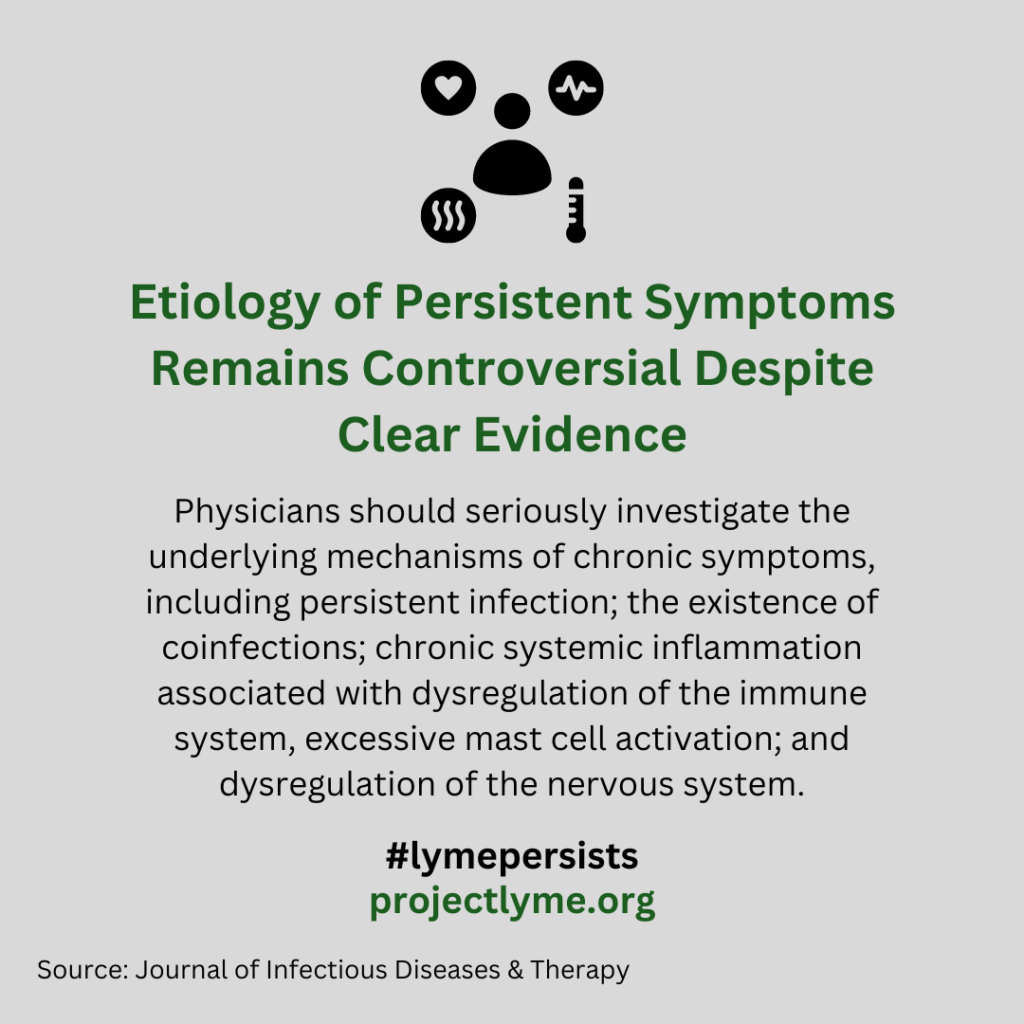PERSISTENT SYMPTOMS REMAIN CONTROVERSIAL
DESPITE PILES OF EVIDENCE


It is clear that patients infected with B.burgdorferi who were never diagnosed or treated for acute Lyme disease have a persistent infection. However, the existence of persistent infection in patients treated for acute Lyme disease and who continue to be symptomatic remains controversial. In their acknowledgment of chronic symptoms following treatment of acute Lyme disease with two to four weeks of antibiotics, the CDC states that “…5-10% can have prolonged symptoms of fatigue, body aches, or difficulty thinking following treatment.
“The cause of these symptoms is currently unknown” [51]. In fact, there is clear evidence that persistence of chronic symptoms may be due to multiple mechanisms:
- Persistent infection with B.burgdorferi as demonstrated by
multiple studies in animals and humans that have documented
live spirochetes following antibiotic therapy and improvement
in symptoms in retreatment studies. Immune suppression and
immune evasion by B.burgdorferi is well documented. - Persistent infection with one or more coinfections that have never
been treated. - Systemic inflammation associated with immune dysregulation,
autoimmunity, and excessive mast cell activation. - Dysregulation of the autonomic nervous system.
- All of the above.
Western medicine adheres to the principle of Evidence-Based Medicine (EBM) as the standard of care. According to Dr. David Sackett, considered the father of EBM, “EBM is the integration of clinical expertise, patient values, and the best research evidence into the decision making process for patient care.” Clinical expertise refers to the clinician’s cumulated experience, education and clinical skills. The patient brings to the encounter his or her own personal and unique concerns, expectations, and values”.
As the medical community has adopted EBM, Sackett’s emphasis on “clinical expertise and patient values” has been lost. Rather than rely on flawed guidelines, it is incumbent on physicians to validate patients’ symptoms and utilize their expertise to thoroughly investigate their underlying etiology. Further clinically relevant research is sorely needed to delineate better diagnostic and treatment modalities.